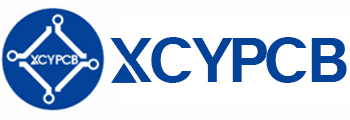16
2022
-
02
7 kinds of commonly used PCB testing technology summary
Author:
Still introduce myself, Zhang Gong, NPI engineer. If you don't know what I do, please read my article (just click on the homepage).
As an NPI engineer, DFM manufacturability analysis covers a wide range of areas. Today it is about PCB testing technology and PCB testing methods.
1. What is Design for Test (DFT) for PCB Manufacturing?
In the PCB manufacturing process, an essential part of it is to test the assembled PCB according to its function and manufacturability.
Here is a very professional name: design for test (DFT), which is actually a series of inspections carried out after PCB reflow soldering or wave soldering or reflow soldering wave soldering, such as X-ray, AOI, ICT, FCT inspection, etc.
Of course, for engineers who have been working in PCB factories for a long time, these are common.
Slightly different from DFM, DFM is to avoid risks, find problems and solve problems before production and manufacturing; DFT is to check problems and solve problems during the production and manufacturing process.
Although different, the two are equally important. AiPCBA
To be more professional: PCB design for test (DFT) is a method of operational and functional testing of circuit boards and layout optimization. Design for PCB Test (DFT) identifies any short, open, misplaced components, or faulty components.
Wave Solder Plot (from AiPCBA)
Design of Test (DFT) is primarily designed to verify the following 3 questions:
Is the circuit board design accurate?
2. Is the circuit board manufactured perfectly? Is there any defect?
3. Are all the components, chips and connections on the PCB working well?
There are still some problems that need to be solved:
1, components should be properly spaced to reduce the risk of test defects.
2. If the solder mask between the pads is not provided correctly, the electrical performance of the PCB may be degraded.
3. Optimize bit size
4. Solve the problem of improper size of surface mount pad
5. Acid trap detection
Reflow Soldering Chart (from AiPCBA)
Parameters Included in Design of Test (DFT) for 2. PCB Manufacturing
1. Test points
Test point insertion is a necessary technique in DFT to improve test efficiency. The location of the test point depends on how many components it can cover. Signal integrity problems can be alleviated by arranging accurate power and ground test points.
2. Test routing
You can place test points on the traces that simulate sensitive traces. These test points can be connected to an oscilloscope or signal generator to understand the behavior of the signal.
3、LED
LEDs can be added to determine whether the power is on or off, and debugging LEDs is still suitable for FPGA or microcontroller for mass production.
4. Joint
The test point connected to the via is used to measure the voltage on the.
Contact Information
Address: 318 Nanshan Road, Jianghai District, Jiangmen City, Guangdong Province
Welcome to contact me

Mr. Fang

Miss Li
Message
